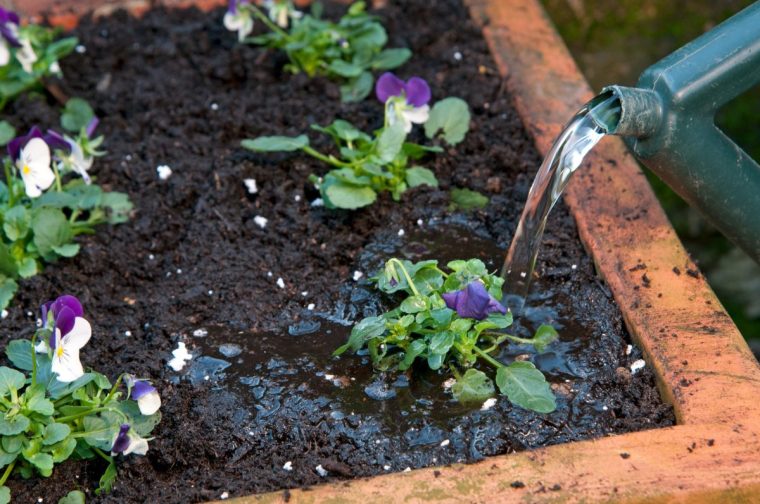With drought announced in some areas and a hot summer likely, it is time to consider making your garden drought-proof, including being parsimonious with water.
Mulching helps to reduce soil moisture loss, keeps roots cool and prevents the growth of weeds, which use much water, robbing garden plants. Mulch after watering or a summer storm, rather than covering dry soil. Aim for about 7cm depth of mulch – 5cm is not much weed deterrent, and more than 9cm is unnecessary.
Mulches of bark, garden compost, soil improver or rotted manure will be incorporated into the soil by worms and other soil organisms over winter, where it will boost the ability of the soil to retain moisture in future years.
Where hoeing is needed, work very shallowly, because disturbed soil releases useful moisture and leave any digging until the autumn. Dug soil swiftly dries out.
Water in the evening or early in the morning, as much water evaporates before it can soak in during the day. Sprinklers are highly inefficient, with much water evaporating as it flies through the air, and are best avoided when water is scarce. Lawns are the most likely place where sprinklers are used, but can be left unwatered. They may go brown, but will green up again once rain resumes, with no lasting harm.
Plants that need much watering or wilt readily at midday are often unsuited for their site. It is worth planning to replace them for next summer with the very wide range of sun-loving drought tolerant plants including ceanothus, cistus, euphorbia, Hylotelephium spectabile, lavender, phlomis, rosemary, salvias and ornamental grasses.
Plants in dry shade that tolerate summer dryness include epimedium, liriope and periwinkle. Watering little and often is only needed for seeds and anything that is newly planted. Established plants do better with a good, thorough soak every 10 days or so, which may involve as much as four watering cans per square metre. Ideally use collected rainwater or reuse water from the kitchen or bathroom.
 Move containers that need to be watered often into the shade to lessen their thirst (Photo: Tim Sandall)
Move containers that need to be watered often into the shade to lessen their thirst (Photo: Tim Sandall)
Making earthen “ponds” around plants helps to ensure the water soaks in.
Often the soil looks wet on the surface but remains dry lower down. Assess your watering two hours later using a trowel to check the water has soaked in.
Containers that need to be watered often, particularly hanging baskets, can be moved into the shade during dry, hot periods, to greatly lessen their thirst. They can be restored to their original positions when the heat subsides. Other ways to keep containers in good condition while minimising water use include using bigger containers, grouping pots together and standing them on saucers.
Good drought-resistant container plants include angelonia, felicia, helichrysum, pelargoniums, scaevola, and half-hardy succulents including aeonium, agave, mangave and sedums.
In Britain, established trees and shrubs are very resistant to dry weather, as they have extensive roots. Some leaf loss is normal in a dry summer and they recover for next year. Where necessary, remove any competing vegetation, especially weeds and grass, in the area under the canopy and apply mulch.
Trees and shrubs planted in the past two years need special care. Keep them weed- and grass-free for at least one metre around them and water thoroughly every two weeks. Watering bags, which are filled with water that seeps out over the rootball, are very efficient.
Keep your water butts no more than half-full to capture any summer downpours. July, in particular, seems prone to unpredictable storms, which can very usefully top up supplies.
The RHS is a charity inspiring everyone to grow via its research, advisory, outreach, shows and gardens. For more information, visit: rhs.org.uk

